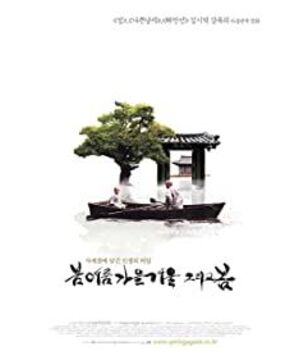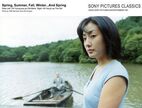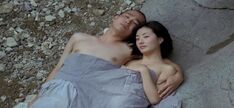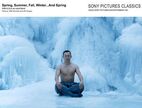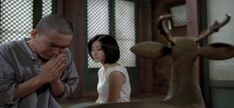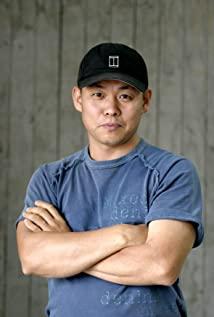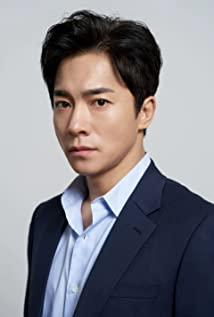"Spring, Summer, Autumn, Winter and Another Spring" The language was sparse and early warning. After reading it, I was rushed by anger...
The film has a distinctly philosophical overtone, or Zen. The theme I want to talk about is Zen meditation. From when I was a child, I was carefree and didn’t know good and evil, until I carried the big stone in my heart, I practiced Zen all the way, carried the weight, and finally got rid of the stone. This is the process of Zen meditation. The tying of stones is the most outline and leading plot in the entire film.
Because I don't understand it too much, the following are my personal opinions.
Like the empty room, there are few lines, and it is driven by pictures. The first half is realistic, and the second half becomes surreal. One of the reasons why this connection between the front and back is not abrupt is because the floating island temple, the monk life itself is isolated from the world, and strange things are easily accepted. On the other hand, architecture is surreal from the very beginning.
The door without walls inside the temple and the door without walls outside the floating island, the walls in both places are blank, which can be said to be ignorance or an invisible boundary. This boundary has three meanings, which can be related to the herb line brought out by the bright scene in the chapter of Spring. In the spring chapter, the middle-aged monk picked two poisonous weeds and medicinal herbs that were similar in appearance. The first level of meaning of the boundary of ignorance is good and evil, or the human world and Buddha-nature. The second level is the invisible stage for the audience to watch, and the third level is the physical meaning. This scene was chosen very well.
In the autumn chapter, the floating island temple slowly rotates, the little monk can't move the boat when he leaves, the flooded gate people stand directly on the water, etc., all of them are brought out very naturally. These small details imaged the entire floating island and became the manifestation of the inner space of the old monk. The old monk is calm on the surface, but the rotation of the temple shows his inner turmoil. The old monk's reluctance to row the boat is the old monk's reluctance, and people on the water represent being overwhelmed by emotions, and so on.
Also imaged are the animals in it, snakes represent wrong views, or in other words love business, roosters represent violent reproductive desires, etc. There is a saying that the white cat represents the Buddha, because it once jumped to the position of the Buddha statue, but I personally think that the cat is constantly stirring, and the old monk can't stand still. Plus cats can also bring out the passage of time.
The autumn chapter is the movement of the old monk and the conversion of the young monk. The little monk's conversion side used several methods of release from the Zen classics. Deshan sticks to Linji to drink. Generally speaking, it is to use sticks to make people realize epiphanies in the mixed thoughts, so the old monks tied the little monks and took the stick. A beating, a big drink after beating. Then he got up and beat him again. As for the paper on the little monk's face, I haven't seen a similar koan. My guess is that it embodies the severance of public flow, which closes the five senses and isolates the mind, similar to the spell that Xu Xian was cast in "Green Snake". The reason why the old monk wanted to seal his five senses with stickers on his face was precisely because he was moved. There is also a close-up at the end, the paper is wet with tears.
Before the young monk was taken away by the police, the old monk asked him to engrave his sutras. This passage is a bit similar to the head of the discussion. The old monk wrote to calm his mind, and the young monk was stable in the process of writing. Even with the police, he threw away the violence, devoted himself to the color, and reached trust with the little monk in a silent acquaintance.
The winter chapter was criticized for dragging the rhythm, but it was actually because the little monk had settled down, the lake was frozen, and the snake hibernated. The slow and long shots are in harmony with his mood. But when the woman with the face covered came to the temple, he was tempted again and wanted to know if this woman was his first love, but she made the woman flee at night and died tragically in the ice lake. He once again carried the stone to practice, and the ice surface also melted. From a surreal point of view, this is not just the middle-aged experience of the young monk, but also the reappearance of the old monk when he was young.
There's a lot of talk, maybe I don't have comprehension. After reading it, my first reaction was so I don't need to be sentenced to death for killing my wife?
View more about Spring, Summer, Fall, Winter... and Spring reviews


